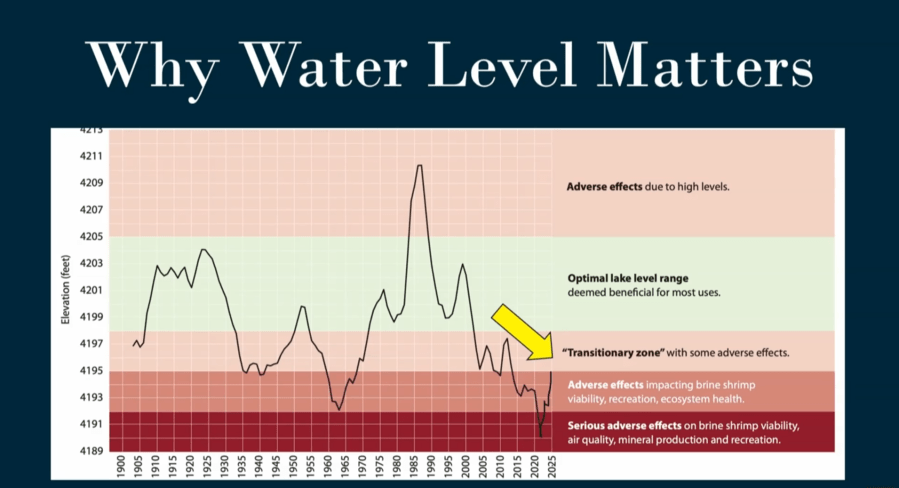Great Salt Lake’s south arm hits ‘significant’ elevation
SALT LAKE CITY (ABC4) — This week, the south arm of the Great Salt Lake was measured at 4,195 feet in elevation, the low-end benchmark for what officials deem a “transitionary zone” for the lake’s ecosystem.
“That’s a significant number,” Great Salt Lake Commissioner Brian Steed told a panel of lawmakers Tuesday in the Legislative Water Development Commission.
‘Bathroom monitor’ Dougall drops video in latest attack on transgender bathroom bill
He explained that at 4,195 feet is where the lake only sees “some adverse effects” due to low water levels.
While that’s still several feet below what’s considered optimal, it’s much better than where the lake was at its lowest in late 2022.
Back then, the lake’s south arm was on the verge of ecological collapse, with salinity levels so high it was unsuitable for brine shrimp and brine flies, on which migratory birds demand.
But after two years of heavy snow in Utah’s mountains, the lake is seeing continued recovery, especially this year, Steed said.

While last year’s record snowfall replenished reservoirs and saturated the soil, much of this year’s snowmelt has made it into the Great Salt Lake — in both the south and north arms.
This can be seen with the higher water levels and also in the amount of brine flies buzzing this spring.
“If you have the experience of going to the Great Salt Lake over the next few days, take your bug spray,” Steed told the lawmakers. “There’s lots of bugs.”
A report earlier this month from the Natural Resources Conservation Service said that the Great Salt Lake could still rise another half-foot this spring. If it does, it’d reach levels in the south arm not seen in a decade.
Yet, as Steed noted in his presentation, the summer will bring evaporation. In a typical year, the Great Salt Lake drops about two feet over warm months.
Looking ahead, Steed told the committee that his office is working on various projects to get more water into the lake, improve the science that goes into studying the lake, and to coordinate efforts between all the state agencies that work on the lake.
Copyright 2024 Nexstar Media, Inc. All rights reserved. This material may not be published, broadcast, rewritten, or redistributed.
For the latest news, weather, sports, and streaming video, head to ABC4 Utah.

